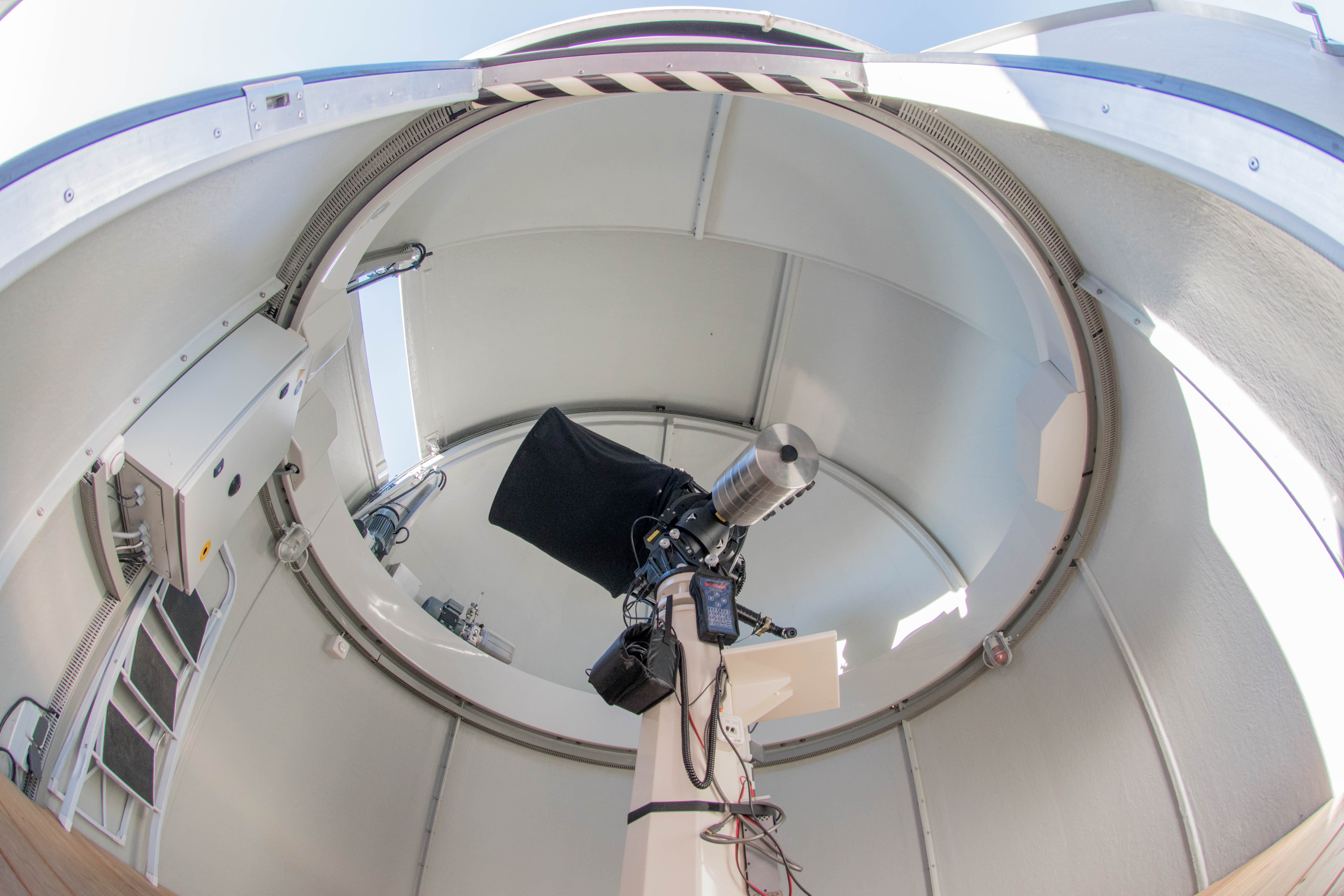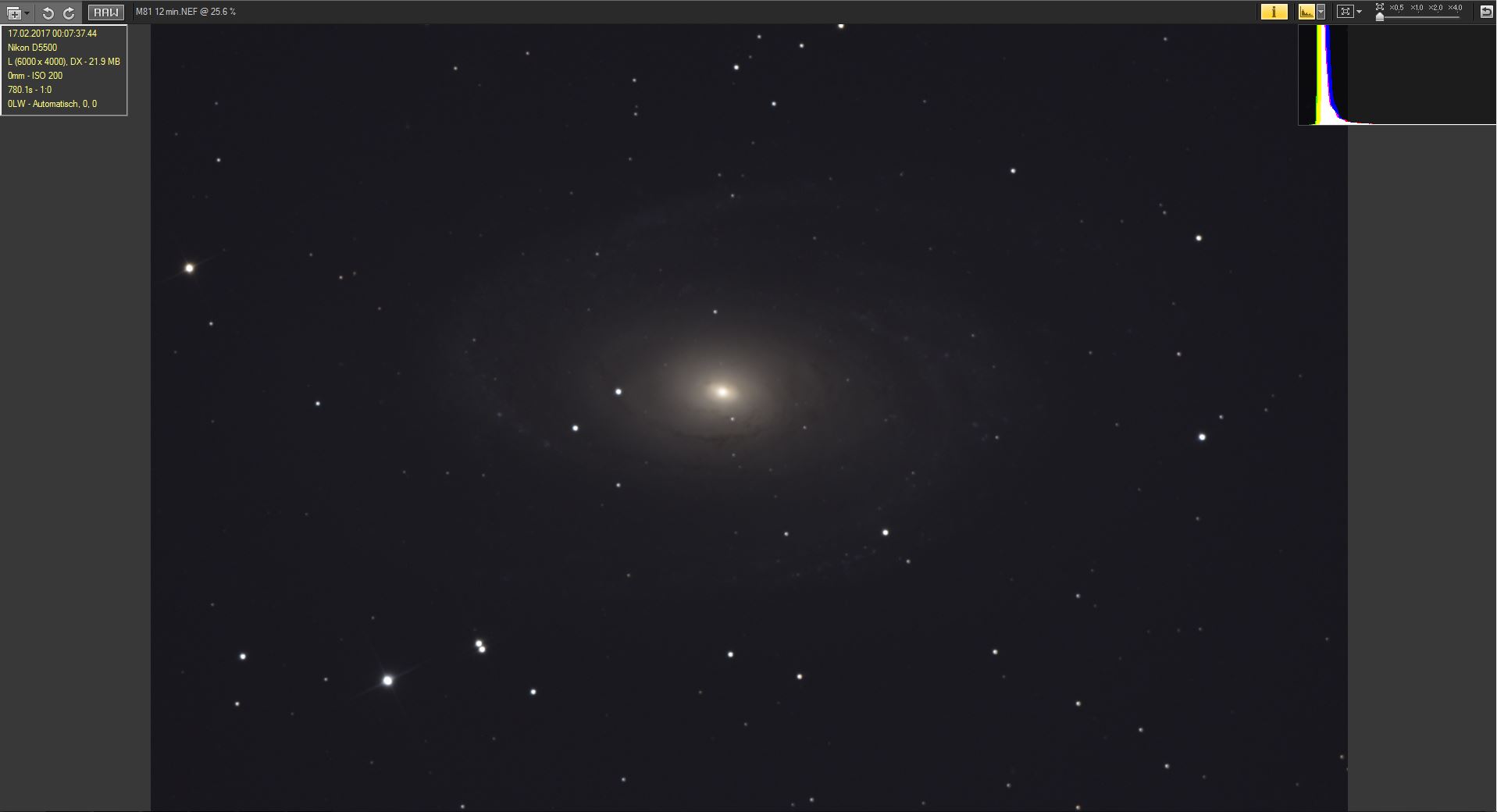How do you give a hotel at 1900 meters above sea level a personal touch? You build an observatory on the highest level, a platform above a 50-person seminar room. And there should be a special telescope and your special mount available.
The choice was a Planewave CDK17, a TEC 110, and the mount, a 10 Micron GM 2000 HPS. When I took over the management of the observatory, as a mechanical engineer, I was particularly concerned with this mount. What can it really do under these conditions? In summer a maximum of pleasant 20 degrees, but in winter it can be as low as -25 degrees or more. When the mount was set up in spring 2013, it was of course also calibrated. But time was pressing, and as it turned out, it was enough for visual observation, but I also wanted to photograph with it. The starware was built primarily for observation by guests.
The menu navigation and operation of the handheld control is intuitive and clearly laid out. Pairing with the dome was done in a few steps. The position of the telescopes and the mount in the dome was entered into the hand controller. The dome moves into the perfect position and the telescope always has a clear view of the night sky. The comets, asteroids and satellites database can be updated in a few steps. The links for the data download can be found in the manual.
But now to the astrophotos I wanted. You can expose 12-15 min without autoguiding at a focal length of 2940mm on the CDK 17. On the TEC 110 20min are realistic. Longer exposure times are possible, but not if the CDK17 and the Tec110 bring the mount to the load limit. The prerequisite is a perfect alignment and an alignment of at least 25 stars. The program Model Maker from Per Frejval surely brings some more accuracy. But I am satisfied with the current alignment. 12 min. exposure at a stretch with the Planewave CDK without autoguiding is enough for me. With active dual tracking you don't hear any correction noise from the motors. The proof for a very good polar alignment. Probably because of the high weight of the telescopes it is necessary to adjust the tracking by means of tracking correction. If the telescope is pointing to the east, I set the value of the correction to -0.040%. If the telescope is in the west, I reduce the value to -0.010%. Everything is described in detail in the manual.
The image shows M81 as unprocessed raw image 12 min exposed. Taken at Planewave CDK17 at 2940mm focal length with a Nikon D5500 DSLR. Of course, autoguiding is possible without any problems. But when I want to take photos after a guided tour in the observatory, the camera goes to the focuser, focus and off I go. The workmanship and technical details can be found on the product page of Baader Planetarium or in the customer review of Rolf Geissinger the mount can of course also be controlled remotely. If a guest rents the observatory for a night, he can monitor his series of exposures from his hotel room. I am absolutely satisfied with the GM 2000HPS. Whereby the GM 4000HPS would be surely still better suitable for us. But who knows? Maybe one day we'll upgrade.



(translated Team Baader Planetarium)
Womit gibt man einem Hotel auf 1900 m Seehöhe eine persönliche Note. Man baut auf der höchsten Ebene, einer Plattform über einem 50 Personen fassenden Seminarraum, eine Sternwarte. Und da sollte schon ein besonderes Teleskop und deine besondere Montierung zur Verfügng stehen.
Die Wahl viel auf ein Planewave CDK17, einen TEC 110, und die Montierung, eine 10 Micron GM 2000 HPS. Als ich die Leitung der Sternwarte übernahm setzte ich mich als Maschinenbau Techniker besonders mit dieser Montierung auseinander. Was kann die wirklich unter diesen Bedingungen. Im Sommer maximal angenehme 20 Grad, aber im Winter kann es schon -25 Grad oder mehr haben. Als die Anlage im Frühjahr 2013 aufgestellt wurde, hat man sie natürlich auch eingenordet. Doch die Zeit drängte, und wie sich herausstellte, hat es zwar für die visuelle Beobachtung gereicht, aber ich wollte auch damit fotografieren. Die Sternware wurde in erster Linie zur Beobachtung für die Gäste gebaut.
Die Menüführung und Bedienung der Handsteuerung ist intuitiv und übersichtlich aufgebaut. Die Koppelung mit dem Dome war in wenigen Schritten erledigt. Die Position der Teleskope und der Montierung in der Kuppel wurde in dem Handkontroler eingeben. Der Dome fährt in die perfekte Position und das Teleskop hat immer freie Sicht zum Sternenhimmel. Die Kometen, Asteroiden und Sateliten Datenbank lässt sich in wenigen Schritten aktualisieren. Die Links für den Daten Download findet man im Manual.
Nun aber zu den von mir gewünschten Astrofotos. Man kann ohne Autoguiding 12-15 min bei einer Brennweite von 2940mm am CDK 17 belichten. Am TEC 110 sind 20min realistisch. Längere Aufnahmezeiten sind möglich, aber nicht wenn das CDK17 und der Tec110 die Montierung an die Belastungsgrenze bringt. Voraussetzung ist eine perfekte Einnordung und ein Alignment von mindestens 25 Sternen. Das Programm Model Maker von Per Frejval bringt sicher noch etwas an Genauigkeit. Ich bin aber mit dem aktuellen Alignment zufrieden. 12 min. Belichtung am Stück mit dem Planewave CDK ohne Autoguiding reicht mir. Bei aktivem Dual Tracking hört man kein Korrekturgeräusch von den Motoren. Der Beweis für eine sehr gute Polausrichtung. Vermutlich durch das hohe Gewicht der Teleskope ist es aber notwendig das Tracking mittels Trackingkorrektur anzupassen. Richtet sich das Teleskop nach Osten stelle ich den Wert der Korrektur auf -0,040% ein. Wenn das Teleskop im Westen ist, reduziere ich den Wert auf -0,010%. Alles ausführlich im Manual beschrieben.
Die Aufnahme zeigt M81 als unbearbeitetes Rohbild 12 min belichtet. Aufgenommen am Planewave CDK17 bei 2940mm Brennweite mit einer Nikon D5500 DSLR. Natürlich ist Autoguiding problemlos möglich. Aber wenn ich nach einer Führung in der Sternwarte Fotos machen will, kommt die Kamera an den Okularauszug, scharfstellen und los geht es. Die Verarbeitung und die technischen Details findet man auf der Produktseite von Baader Planetarium oder im Kundenurteil von Rolf Geissinger Die Montierung lässt sich natürlich auch Remote steuern. Wenn ein Gast die Sternwarte für eine Nacht mietet, kann er vom Hotelzimmer aus seine Aufnahmeserie überwachen. Ich bin mit der GM 2000HPS absolut zufrieden. Wobei die GM 4000HPS sicher noch besser für uns geeignet wäre. Aber wer weiß. Vielleicht machen wir eines Tages ein Upgrade.

